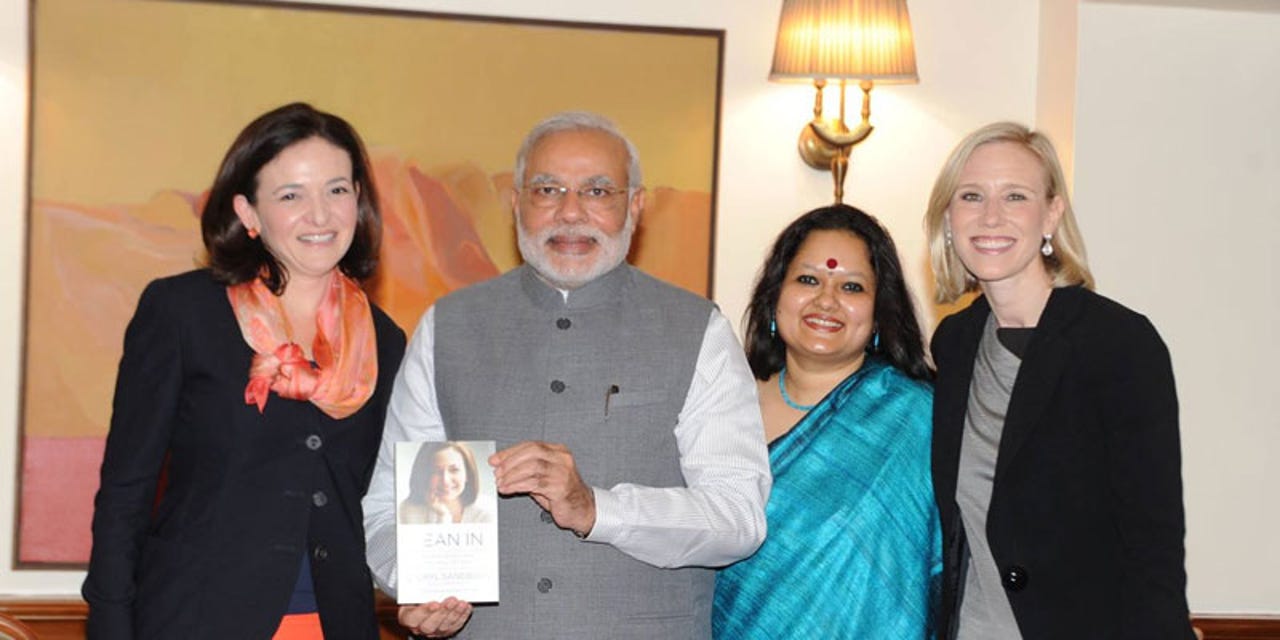Can India save Facebook?


We Indians love to embrace people who embrace us. Perhaps this is normal in a post colonial nation that is still looking for salves to apply to its wounded psyche, perhaps that's par for the course for any nation surfing the intermittent waves of nationalism that come and go or maybe it's just a celebration of who we are through the eyes of others—whatever explanation you wish to choose, the fact is we revel in outsiders who come here and celebrate our country.
So, it's not surprising that Indians took particular delight in the recent visit of Sheryl Sandburg, 45, Chief Operating Officer at Facebook, and we lately discovered, an Indophile. Actually Sandberg, who was previously a Vice President of Global Online Sales and Operations at Google and was Larry Summer's chief of staff at the US Treasury Department under former President Bill Clinton prior to that, is more than just any ordinary Indophile. She was a researcher with the World Bank in India in the early 80’s, traversing the state of Rajasthan for a leprosy project during her stint here.
Therefore, visiting India, a fast growing market for Facebook, must have been especially pleasurable for Sandberg. A bonus for her and the company is a social media obsessed Prime Minister, the recently elected Narendra Modi, whose 19.5 million facebook 'likes' dwarfs the 2.4 million 'likes' that US President Obama has collected. Modi's Facebook page seems to chronicle his every meeting with other world leaders and is heavily trafficked.
Facebook will hope that this is exactly the sort of talisman that they urgently need, which could divert the turbulent currents roiling the social networking site beneath its veneer of robust financial health.
Danger lurks beneath rosy numbers?
You wouldn't get a sense of imminent peril just looking at the social network's numbers. Facebook's overall revenue grew 72 percent year-on-year to US$2.5 billion in the first quarter of 2014, above the US$2.36 billion expected. This included a 50.5 percent increase in US digital display ad revenue last year to Google's 33.3 percent growth rate, according to eMarketer. Behind Google in 2012, Facebook actually outstripped the search behemoth in 2013 with US$3.28 billion in display ad revenue to Google’s US$3 billion.
But these glittering figures mask a very different reality, according to recent reports. Apparently, growth in major segments is slowing, or about to slow in a significant way—for instance, the company's desktop business is stagnant or even in decline. (Right now, it is Mobile that is providing the propulsion, comprising 59 percent of its ad revenue in the first quarter, up from 30 percent y-o-y). Of course, this makes sense when you consider the slowdown in growth of PC sales globally coupled with skyrocketing smartphones sales around the world.
But what is infinitely more troubling—and perhaps a factor for that slump—is the fact that younger users who were once bread and butter for the site, indeed, the lifeblood of its genesis, seem to think that the site is no longer very cool.
Digital consultancy iStrategy Labs’s recent study, which examines Facebook's Social Advertising platform, estimated that the site has 4,292,080 fewer high-school aged users and 6,948,848 college-aged users than it did in 2011. That is a staggering 11 million fewer users—and from a crucial demographic—than just 3 years ago.
The fact is, these days, youth populations don't find Facebook so cool anymore. Instead, they are much more drawn to niftier apps such as Snapchat which enables you to send videos and photos that self destruct in a given period of time, giving the whole exercise of communication an illicit and risqué aura. Which is why the more popular app in the Facebook umbrella is not Facebook but Instagram, which the social network acquired a few years ago but has not successfully monetised as yet.
Humans Needed
The other big existential problem that Facebook faces is—where does one get more bodies? The company has basically signed up 50 percent of all of the world’s Internet users at 1.28 billion but now will have trouble growing further. One of the world’s biggest repositories for bodies (read: revenue) has banned the outfit along with search giant Google so its options for blockbuster growth areas are fairly limited, especially since it is experiencing no acceleration in any of its user regions.
Which brings us to India. Apparently, the country has the highest number of Facebook users outside of the US, and is on track to field 108.9 million of them by the end of this year, up from 77.8 million in 2013 and will grow to at least 211.2 million in 2018.
"This year, eMarketer predicts, the country (India) will enjoy 40 percent growth in Facebook users, the most of any market in the world and more than twice as quickly as regional second-place Indonesia," declared the company to the Times of India. Being well-entrenched in a market that has a potential 1 billion users to tap into could be the key to Facebook’s longevity.
Milking emerging markets
While India may be Facebook's panacea for its growth problems, the unfortunate reality is that large markets don't necessarily translate into lots of dollars, as this article explains. One way to do that is new kinds of ads—specifically, those that present new ways of connecting advertisers and consumers.
Apparently, the facebook is in the midst of testing a new service that allows a person to click on a banner ad which then places a call to the advertiser and then hangs up after which the advertiser calls back and delivers messages related to shopping discounts and other such things, and therefore preserves the consumer's data usage.
Too early to tell whether these are novel, money-churning solutions or mere band-aids over gaping wounds, but Facebook will do well to not just take India's population for granted and devise local innovations to drive user growth lest they become sidelined by the next big wave of social networking that is more cognizant of these things.